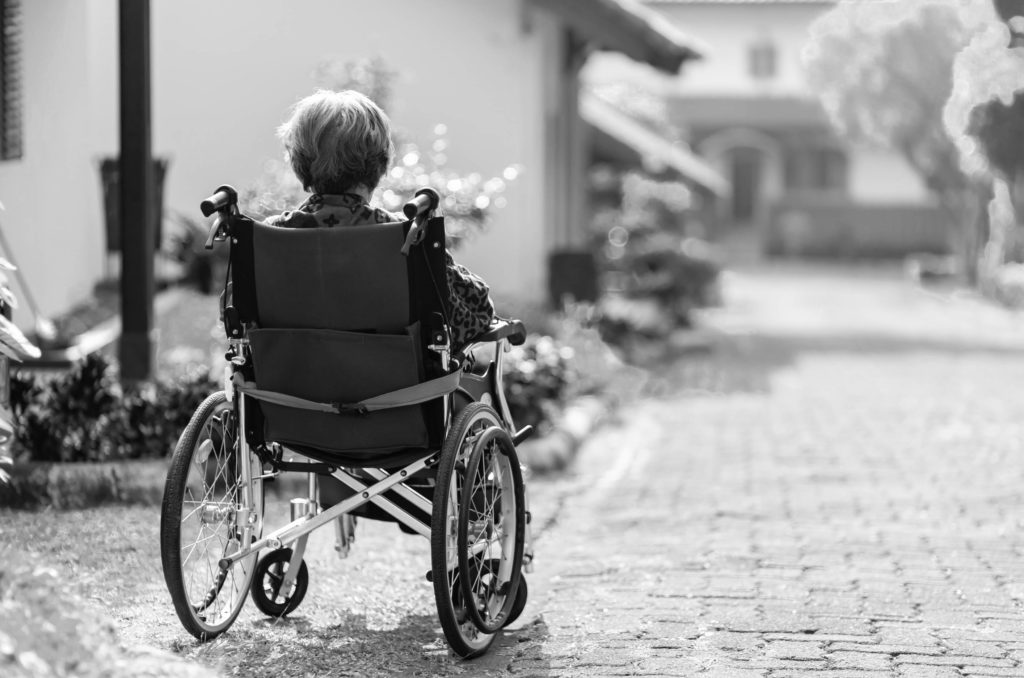
Infection control at the expense of compassion in care homes
On 14 May, the Department of Health and Social Care issued new guidance on care home visiting, which applies to adults of working age and older adults in England. It states that residents can nominate up to five named visitors who can enter the care home for regular visits. It also states that residents who cannot be easily looked after by care home staff without distress can nominate an ‘essential care giver’ (ECG) who will be able to visit more often.
The guidance recognises that visits to residents who are ‘end of life’ should always be supported and enabled. Additional guidance updated on 27 May outlines cautious relaxation of restrictions to residents’ rights to participate in activities outside the care home. The document acknowledges that ‘visiting is crucially important for health, wellbeing and quality of life’; however, the recommendations remain ‘guidance’ only and are not legally binding, allowing care home managers to exercise their own judgement about arrangements.
Family accounts of physical and psychological harm and safeguarding concerns
Recent interviews that HART member Ali Haggett has undertaken with members of the support group ‘Unlock Care Homes’ indicate that many care homes continue to restrict family visits. Relatives describe booking systems with too few slots for the number of residents; infrequent allocation of visits (20 or 30 minutes every two weeks); dehumanising ‘pod’ visits; and chaperoned visits with ‘five minutes’ warnings. Residents are also too often being forced to isolate for 14 days following a visit out of the care home.
Families report blanket refusals to consider ECG status, and disputes with GPs and care home managers over the definition of ‘end of life’. NHS guidance states that, although it is not always possible to predict, people are considered to be approaching the end of life when they are likely to die within the next 12 months, particularly if they are frail or suffer from dementia. However, many care home managers have redefined ‘end of life’ to apply to the final 48 hours of a resident’s life. Consequently, many families have missed their loved one’s death.
It is not unusual to hear that relatives have not seen residents for 14 months. This has been especially barbaric for dementia patients and their families, as can be seen in this heart-wrenching story. In many cases, dementia patients no longer recognise family members and feel as though they have been abandoned.
Families frequently describe inappropriate prescribing of antipsychotic medication to quieten dementia residents and those with complex degenerative diseases – in some instances accompanied by worrying reports of neglect. Relatives continue to express great concern about the physical and psychological deterioration of residents, many of whom have received no ancillary dental, podiatry or personal care services for over one year. Many have poorly maintained mobility equipment and have lost vital devices such as hearing aids and glasses, leaving them disorientated and distressed. Some families even report basic failures in the monitoring of pain, hydration and levels of personal hygiene.
When seeking support, families repeatedly encounter obstacles from the Care Quality Commission and the Local Government and Social Care Ombudsman. Some relatives attempting to move dementia residents to another care home report that Lasting Power of Attorney status provides them with no real power, since ‘Best Interests’ decisions are repeatedly decided on inaccurate care plans and without adequate knowledge of the resident. Those who have applied to be a Relevant Person’s Representative under the Deprivation of Liberty Safeguards have been told that a Court of Protection hearing could take many months.
Proposals
The National Care Forum expressly state that isolation caused by restrictions is intrinsically harmful and is causing extreme anguish. Underpinning their Visiting Charter is the concept that visiting should be enabled as the default position. There are many independent care homes that have enabled visiting continually since the first lockdown. They set exemplary standards of care, balancing the safety of residents with emotional wellbeing and the importance of meaningful contact with family. However, the tendency among many managers to isolate residents from COVID-19 ‘at all costs’ is a worrying trend. The use of infection prevention and control as a rationale for prohibiting safe entry to homes is a misinterpretation and at times even an abuse of those principles.
The longer the current situation prevails, the more likely it is to become routine and de-implementation could become a concern in the future . There is no valid reason to restrict access either in terms of frequency or duration.
The latest update from Downing Street on 14 June states that residents should no longer be required to quarantine for 14 days after a visit outside the care home. It remains to be seen how managers will interpret these recommendations, since they remain guidance only and are not set out in law. We again urge the government to amend legislation in accordance with recent recommendations from the Joint Committee on Human Rights and ensure that the callous examples set out in this article are never repeated.
Care homes should improve quality of life for the elderly and frail, not isolate them for months on end in order to extend a lingering death. And for so many, the cruel reality of these restrictions has meant that relatives have not been at the bedside of their loved ones in their final moments – denying them comfort at the end. This is at the core of so much that has gone wrong over the last year.

